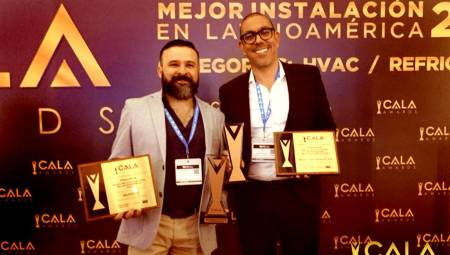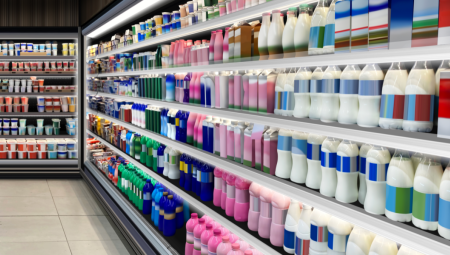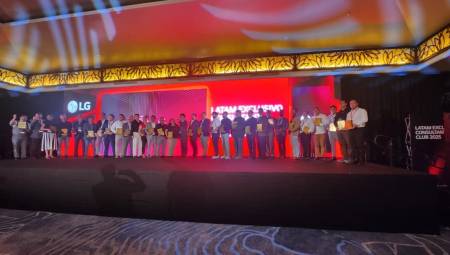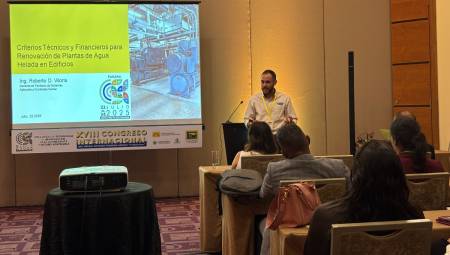By: Héctor Gómez Pérez
 It is no secret to anyone that people spend much of their time in indoor environments that are as diverse as homes, public and private means of transport, workplaces, leisure centers, among others. In these spaces individuals are susceptible to contracting diseases due to contact with other people or conditions related to the stay within a building, the latter are called diseases related to the building (facilities, structures, materials, etc.).
It is no secret to anyone that people spend much of their time in indoor environments that are as diverse as homes, public and private means of transport, workplaces, leisure centers, among others. In these spaces individuals are susceptible to contracting diseases due to contact with other people or conditions related to the stay within a building, the latter are called diseases related to the building (facilities, structures, materials, etc.).
Among these diseases are all those related to hypersensitivity or those derived from exposure to toxic or infectious substances present in an indoor environment. It is at this point that all preventive measures to avoid the proliferation of mold or bacteria in air conditioning systems, which cause diseases to the users of a building, and those aimed at improving indoor air, become important for the ventilation industry.
One of these measures is the use of ultraviolet lights. That is why ACR LATINOAMÉRICA wanted to invite Carlos M. Florez, technical manager of C4 Control de Contaminación Ltda and Gustavo León, sales manager for Latin America of Steril-Aire Inc. to exchange knowledge on the subject.
A topic of importance
"It is a topic that gains topicality because traditionally the industry had been selling temperature and already people think about other aspects such as internal and external pollution," said Carlos M. Florez about the importance of indoor air quality in the air conditioning and ventilation industry.
For his part, Gustavo León pointed out that "numerous studies have been carried out that show how poor indoor air quality (CAI) can generate allergies and asthma symptoms that cause discomfort and serious diseases"; He also specified that inadequate indoor air quality can generate increases in absenteeism and a reduction in productivity in schools and work environments, generally related, when it comes to air conditioning systems, to the pollution of the coils of the systems which generates an increase in energy consumption.
It should be noted that the lamps used for these purposes in air conditioning and ventilation systems are known as UVC. These lights use the wavelength "C", which has the most efficient germicidal properties of the UV light spectrum. This ultraviolet light alters the DNA structure of microorganisms, causing their death or making their reproduction impossible. These microorganisms are represented by mold and bacteria that grow on the cooling coil, as well as viruses, bacteria, and mold microtoxins that travel in the air stream.
Notwithstanding the above, Florez emphasizes that UVCs are only part of the solution since they are effective in preventing the accumulation of microorganisms in the coils, "but it cannot be considered capable of controlling all, nor all the components of poor indoor air quality," he said.
Operation and maintenance
Usually uvc systems are installed in such a way that the surface of the coil and the drainage tray of the AC unit are exposed to lightning. The mold that grows inside the coil acts as an adhesive base that allows dust and soil that exceed the filters, to accumulate at the base of this device generating a reduction in heat exchange and efficiency to cool the air.
In Florez's opinion, three aspects are fundamental in a solution that uses UVC:
The application of a lethal dose to microorganisms.
Adequate exposure time to microbial load.
Irradiation to the entire surface on which microorganisms can accumulate.
On the maintenance of this equipment, Gustavo León explains that after installing the UVC lights only need to be replaced on the date recommended by the manufacturer, and that they do not need cleaning as part of their normal operation, although he specified that "they must be cleaned if the environment has a high concentration of dust particles or if the glass of the lights has been impregnated with traces during their installation". For his part, Florez pointed out that "monitoring the energy intensity is vital to keep the lights at an indicated level."
Regarding the issue of the most relevant aspects in the design or installation of lights in an air conditioning system, the experts specified that a study of indoor air quality must be done before defining whether a UVC solution is suitable, unique or complementary to others such as chemical filtration, particle filtration, dilution or treatment of outside air. Likewise, the correct number of emitters and the appropriate positioning with respect to the cooling coil must be selected to guarantee the necessary dose to eliminate microorganisms; variables such as air temperature, air speed, type of microorganisms to be eliminated and the type of application in which UVCs will be used, as well as the size of the cooling coil, must also be taken into account.
Application and effectiveness of UVCs
According to Florez, UVCs can be used when air conditioning systems present problems due to the accumulation of microorganisms in coils and condensate trays and when other permanent solutions such as adequate filtration are not viable. León also pointed out that these lights, in addition to being used in all types of AC units, are also used in the decontamination of surfaces, the reduction of bacteria in food and the pharmaceutical industry. Its applicability includes government buildings, hotels, restaurants, airports, homes, offices, schools, shopping malls, food factories and clean rooms.
The representative of Steril-Aire Inc pointed out that UVC systems can be classified into two groups: high-power systems, which were introduced from 1990 and conventional ones that were not designed for use in AC systems. He also pointed out that the germicidal potency of both varies. In the case of his company's emitters, he said, they have been designed to generate 2.5 to 5 times more power than conventional UVC systems, so the performance and efficiency is 3 to 4 times higher.
"Dirt and moisture accumulate in the coils, which favors the growth of microorganisms, but we cannot think that these are the only ones that can generate diseases in buildings. There are typical diseases of the 'Sick Building Syndrome' associated with microorganisms such as fungi and molds that grow on the coils and that generate rhinitis and allergies mainly, but what I want to avoid is that it is assumed that contagious viral diseases, infectious aerosols and bacteria associated with internal or external processes are controlled or exterminated with 100% safety by UV light, because there are more aspects that influence that these are propagated or distributed in the building and are not treatable by these systems, "says Florez
Gustavo León referred to this same aspect and said that "UVC lights eliminate microorganisms present on the surface and in the air that generate asthma symptoms, including mold and mold spores, solvents and other volatile organic components. They also prevent the spread of infectious diseases caused by bacteria (TB, Legionella, E. Coli, and chronic cough), viruses such as flu, colds, measles, smallpox, bird flu and Sars. These systems are also used to reduce the incidence of acquired hospital infections."
Speaking in terms of money, UVC lamps have an installation cost, an operational or operating cost (energy) and a replacement cost of lamps after a certain time or when their power is exhausted, as Carlos Florez explained. However, as commented by Gustavo León, the return on the initial investment is amortized in less than a year, without counting the energy savings of an AC system in optimal conditions and those generated in terms of maintenance, reduction of absenteeism from work and increased production.
Latin America and the challenges ahead
When talking about our region and the winds of crisis, the positions of our guests are found: Carlos M Florez considers that the main challenge at present is for the end user to invest in indoor air quality and not only in the initial installation, but in the maintenance of the systems. Faced with the crisis, he said that unfortunately investment in indoor air quality is not a priority in our countries.
Gustavo León, believes that the crisis has made customers focus on products that generate specific savings and states that the sales of UVC lamps of his company have increased in Latin America given the savings generated by the product and the return on investment in a short time. Faced with the challenges demanded by the market for UVC solutions, he said that "the main one is to educate professionals in the CVAC/R industry who are usually skeptical of the use of new technologies and regularly ask for specific tests that validate the concept."













